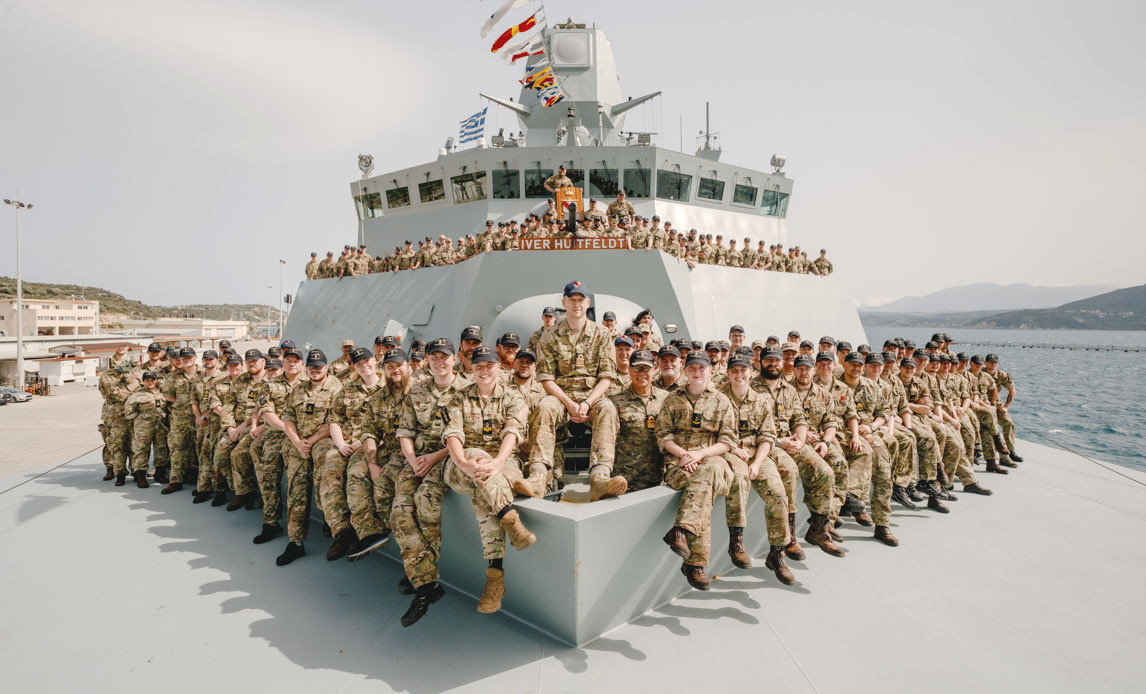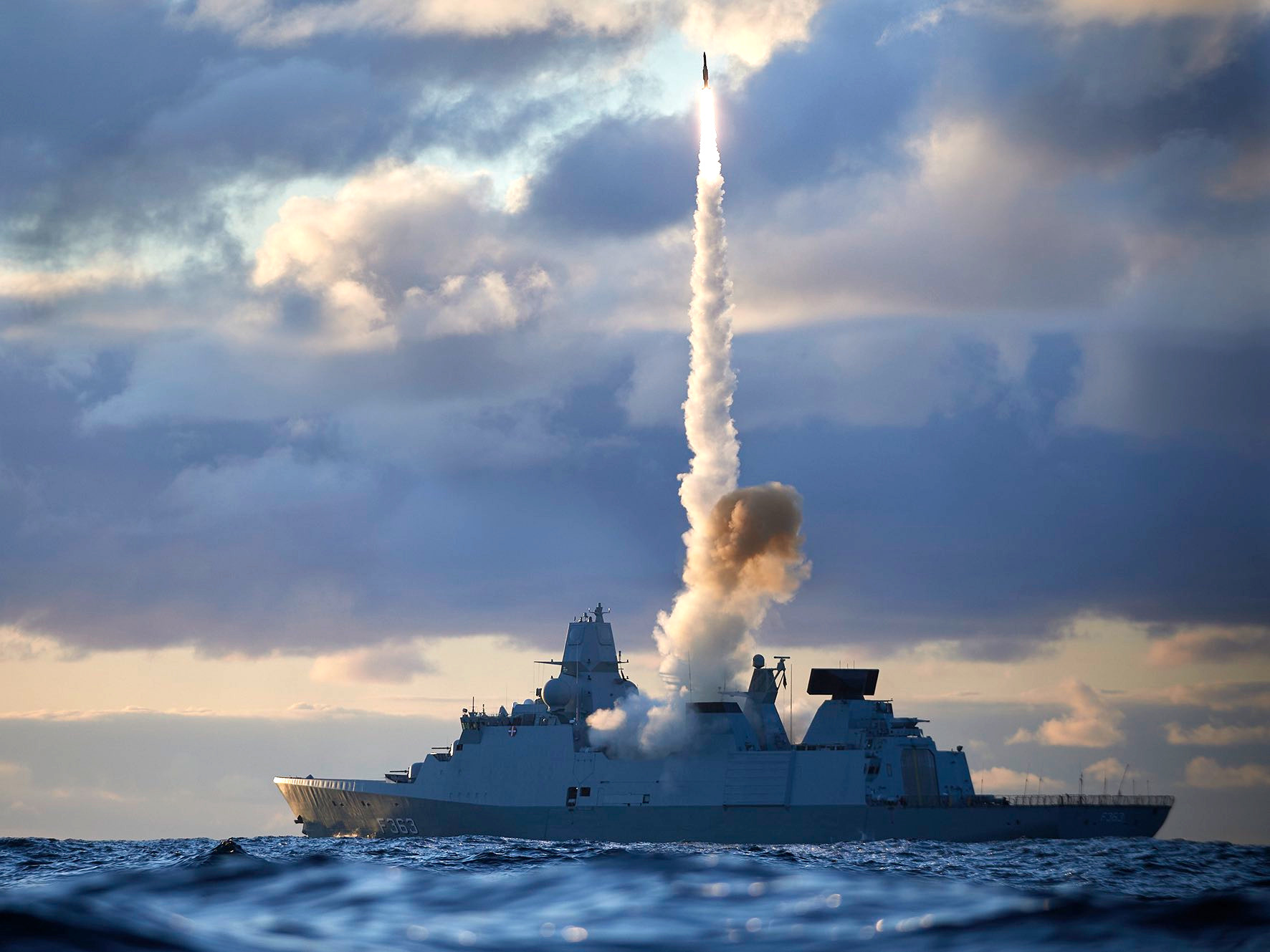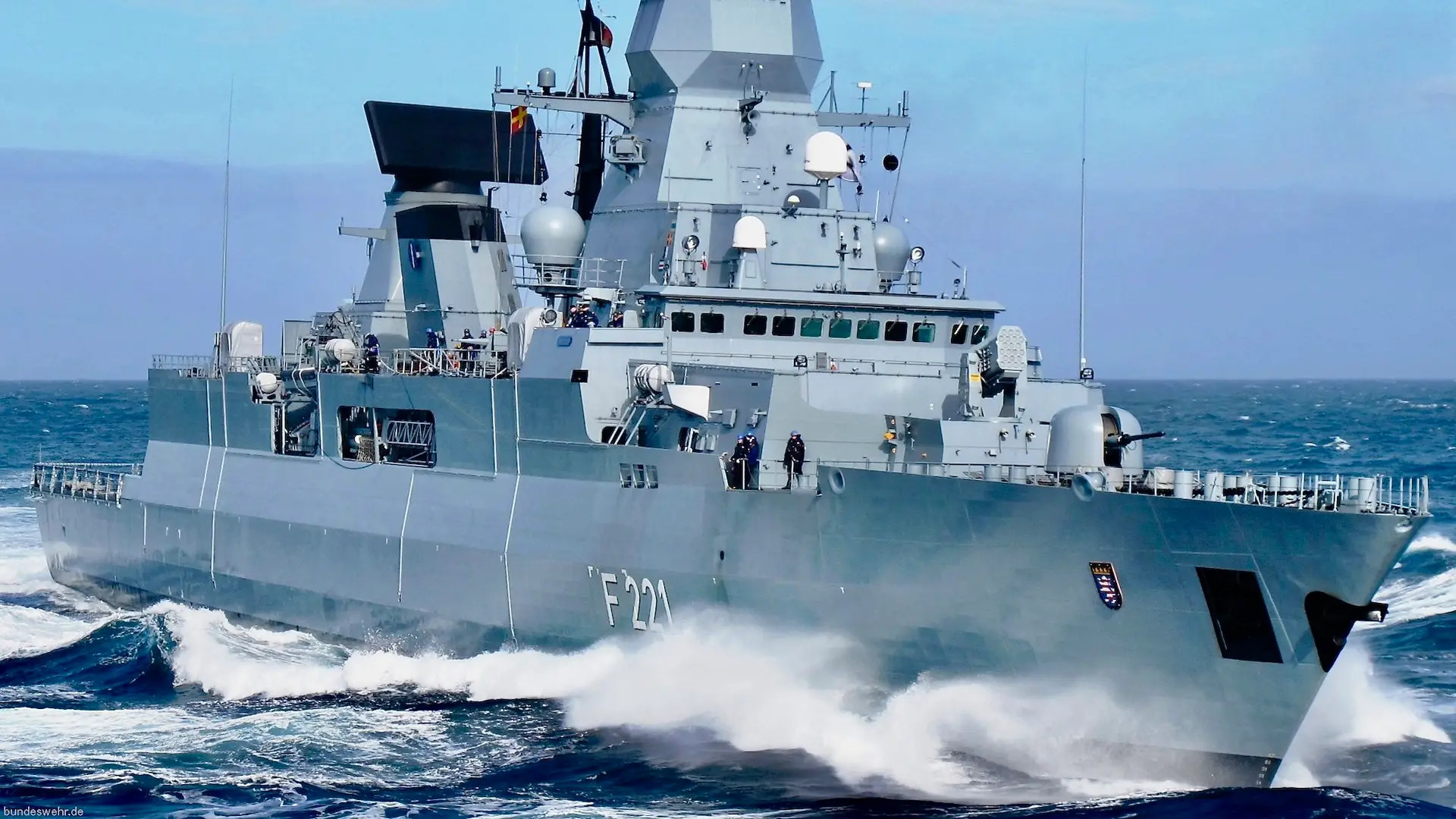Scenes of the Danish frigate Iver Huitfeldt shooting down Houthi drones, and of its crew excitedly cheering after blasting those threats out of the sky, can be seen in a newly released video from the country’s armed forces. At the same time, this comes amid multiple reports that the ship suffered very serious issues with key weapons and mission systems during its recent operations in and around the Red Sea.
The video put out today by the Danish Armed Forces, or Forsvaret, seen in the social media post below, shows the crew of Iver Huitfeldt knocking down two drones launched by Iranian-backed Houthi militants in Yemen. The Forsvaret says the ship, which is now heading home, destroyed a total of four Houthi drones during its deployment. The shootdowns all reportedly occurred on March 9. U.S. Central Command (CENTCOM) previously stated that American and other coalition forces downed at least 28 drones that day, as you can read more about here.
However, reports also emerged today that the Iver Huitfeldt‘s combat management system and associated radars experienced major issues during the ship’s recent deployment that temporarily prevented it from firing RIM-162 Evolved Sea Sparrow Missiles, or ESSMs. The ship did reportedly employ ESSMs against Houthi threats, which, if true, would be the first known instance of these missiles being used in the course of coalition operations against the Houthis.
In addition to the mission system issues, ammunition for the Iver Huitfeldt‘s two 76mm guns also reportedly repeatedly malfunctioned during the deployment, rendering it useless and potentially presenting a hazard to the ship and its crew.
Danish-language outlet OLFI was first to report on the troubles that befell Iver Huitfeldt, citing a leaked internal message from the ship’s commander, Kommandørkaptajn Sune Lund. The Forsvaret has now launched an investigation into what happened to the ship, but it is not immediately clear if they have confirmed any of the specific details that OLFI reported. Iver Huitfeldt is the first of three ships in its class currently in service with the Royal Danish Navy, all of which were commissioned in 2011.
The Iver Huitfeldt was on station for just under three months supporting the U.S.-led Operation Prosperity Guardian mission to protect international shipping from missile, kamikaze drone, and other attacks by Iranian-backed Houthi militants in Yemen. The frigate did shoot down four Houthi kamikaze drones on March 9, according to the Forsvaret.

In his missive to his superiors, Kommandørkaptajn Lund complained about an issue involving the Iver Huitfeldt‘s Active Phased Array Radar (APAR), which is produced by Thales Nederland in the Netherlands, as well as the ship’s C-Flex combat management system from Denmark’s Terma, according to OLFI. The exact nature of the issue is unclear, but reportedly prevented the ship from employing its ESSM short-to-medium-range surface-to-air missiles for approximately 30 minutes.
The I-band APAR is Iver Huitfeldt‘s primary air defense fire control radar for use in cueing weapons, and especially ESSM. The frigate also has a Thales Nederland Signaal Multibeam Acquisition Radar for Tracking, L Band (SMART-L) long-range air and surface search radar, which an active electronically scanned array type.

It is unclear whether or not the reported issue occurred while Houthi threats were inbound, and the Iver Huitfeldt crew did ultimately use ESSMs to engage hostile drones, according to a separate report from Marineschepen.nl in the Netherlands. As already noted, this seems to be the first hard indication of ESSMs being used in recent operations in and around the Red Sea by any Navy.
Each Iver Huitfeldt class frigate has a 12-cell Mk 56 Vertical Launch System (VLS) array specifically for firing ESSMs, which are short-to-medium range surface-to-air missiles. The ships also have a 32-cell Mk 41 VLS array typically loaded with SM-2-series medium-to-long-range surface-to-air missiles. Various U.S. Navy and other foreign warships operating in the region also have ESSMs, as well as SM-2s and other types of surface-to-air missiles, in their arsenals.

Exactly what happened with the Iver Huitfeldt‘s APAR and C-Flex system that prevented it from firing its ESSMs, even temporarily, is also not clear. Kommandørkaptajn Lund’s message does reportedly say that this is a known issue, at least on some level, but is also one that he claims has been ignored for years due to a lack of any “sense of urgency to resolve the problem.”
Thales Nederland told Marineschepen.nl that it had received information from the Forsvaret saying that an initial investigation did not point to a problem with the APAR, specifically. Still, this does not automatically rule out an issue related to that radar in combination with the C-Flex system as installed on the frigate.

In addition, after reporting the issue, the crew of the Iver Huitfeldt was advised by the Danish Ministry of Defence Acquisition and Logistics Organisation (DALO) to avoid using the APAR for fire control purposes, according to Marineschepen.nl. The option instead was to fall back on the far less capable Saab Ceros, radar and optronic tracking fire control directors that the ship has primarily for use with its two 76mm guns.

Iver Huitfeldt‘s 76mm guns, which are mounted in a pair of separate turrets on the bow, were also used to engage Houthi drones. During those engagements, 76mm rounds repeatedly detonated prematurely, sometimes very close to the ship just after leaving the barrel, Kommandørkaptajn Lund reportedly explained in his message. Lund said that the shells had originally been manufactured three decades ago, though they had been refitted with new proximity fuzes to help improve their effectiveness against aerial threats, in 2005.
“Pending a [better] explanation for this occurrence, I must emphasize the critical and unacceptable nature of sending a frigate to an enemy environment with ammunition consisting of these types of unstable shells,” he complained, according to Marineschepen.nl.
Iver Huitfeldt is not the first European warship to experience issues during recent operations defending against Houthi threats in and around the Red Sea. The German Navy’s Type 124 Sachsen class frigate Hessen mistakenly fired two SM-2 missiles at a U.S. MQ-9 Reaper drone. The Reaper survived the incident only because those missiles failed to function as expected for still unclear reasons, as you can read more about here.
In light of the Royal Danish Navy’s troubles, it has been pointed out that the Hessen also has Thales Nederland APAR and SMART-L radars, but tied to a different combat management system. There is no indication one way or another that what happened to Hessen and to Iver Huitfeldt are in any way related. These are not the only warships to use one or both of these radars and/or the C-Flex combat management system, either.

As The War Zone noted at the time, the Hessen incident underscored the serious complexities of the operational environment in and around the Red Sea, which is now rife with naval vessels and aircraft operating under multiple command structures. Hessen, for instance, is not operating under the auspices of the U.S.-led Operation Prosperity Guardian, but is instead part of a separate European Union-run mission with the same basic objectives called Operation Aspides. The U.S. MQ-9 that the German ship fired upon was reportedly supporting a U.S. counter-terrorism operation in the region unrelated entirely to any international efforts to defend international shipping lanes from Houthi attacks.
The issues that Hessen and now Iver Huitfeldt have suffered with their weapons and mission systems also raise other questions about the readiness of many European navies and armed forces, in general. For many of the countries now operating in and around the Red Sea, this is the first time in decades, if ever really since the end of World War II, that they have operated in a maritime combat environment where there is a need to be prepared to engage very real incoming threats on a daily basis.
Iver Huitfeldt class frigates have been deployed on counter-piracy missions in the past, but these are much lower-intensity operations. These Danish warships have also helped patrol the highly strategic Strait of Hormuz that links the Persian Gulf and the Gulf of Oman, but have not been called upon to fire their weapons in anger in the course of those operations.

“We have only now found out upon request that some of the ammunition from the frigate ‘Hessen‘ can no longer be procured because there is no longer the corresponding industrial capacity,” Florian Hahn, defense policy spokesman for the Union parliamentary group in the German Bundestag, revealed after the incident involving that ship in the Red Sea, according to German media reports. “So when the stocks are depleted, the Navy can no longer refill them — and has to withdraw the frigate… Parliament decided to deploy without knowing that there was obviously an ammunition problem with the class 124 frigate.”
This all speaks to the lack of a “sense of urgency” to resolve known issues, as well as refresh stockpiles of key munitions, that Lund reportedly brought up in his message. The very short duration of Iver Huitfeldt‘s deployment is another significant indicator in this regard.
In the end, as proud as Iver Huitfeldt‘s crew rightfully is about helping to prevent Houthi attacks during their time in the Red Sea, the bigger impact of their deployment may turn out to be drawing attention to serious issues that need to be addressed.
Contact the author: joe@twz.com
